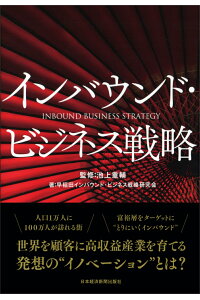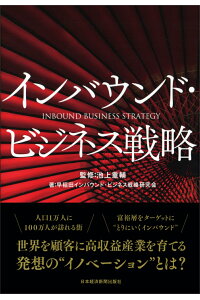池上重輔 監修「インバウンド・ビジネス戦略」日本経済新聞出版社
インバウンド対応の仕事をするようになり、ビジネス戦略の観点からも勉強しておこうと本書を購入しました。すぐに役立つ特効薬はありませんが、現場経験だけでは把握しきれないインバウンドの動きを俯瞰的に知ることができます。いくつか気になった個所があったので、記しておきます。
最初は、真正性と本物感についてです。本書を引用すると、「ツーリズム戦略を考えるうえでぜひ知っておきたい概念のひとつに、オーセンティシティがある。オーセンティシティ―とは「『本物』ないし『真実』であるという特質」と定義され、経営関連の文献では「真正性」または「本物感」とやくされる概念である。」この概念は常々、私の勤務先が強調していて、京都や奈良という歴史の現場で、訪日研修生や留学生、または国内の学生が本物の文化財に触れながら日本を理解することを目的に、事業を進めています。
追加で、さらに重要なことが述べられています。結局のところ、観光資源自体が、本物か偽物かよりも、観光客がそれをどのように捉えているかのほうが重要です。日本文化に精通している一部の外国人を除けば、まさしく本物であるかどうかより、“本物感”を感じられる観光資源の方が、現実的になります。Covid19前に流行った、訪日外国人の和装や、忍者体験も、いかに本物っぽく感じるかが勝負なのでしょう。
最近のツーリズムには重要な2つの特性があるそうです。引用すると、1つ目は「観光者の趣味や嗜好、目的に基づいたテーマに沿って、観光目的地で観光中の行動が決定される」ということが挙げられます。2つ目は「観光者が直接的に、コトを体験する・学習する・人と交流する観光形態である」ことが挙げられる。
また、「現在の観光者は、観光の目的を直接的に体験し、そこで得た経験や感動を人と共有(シェア)することに価値を見出していると考えられる。」という研究結果があるそうです。
最後に、アニメツーリズムの情報です。KADOKAWAが中心となって設立されたアニメツーリズム協会は、ファンや関係者の投票にもとづいて「訪れてみたい日本のアニメ聖地88箇所」を毎年発表しています。皆さんのお近く、あるいは、よく訪問する観光地のそばにアニメ聖地がないか、確認しておくと、役に立つ場面に出くわすかも知れません。(完)

価格:2,200円
(2021/6/8 15:31時点)
感想(0件)
“Inbound Business Strategy” supervised by Shigesuke Ikegami, Nikkei Publishing Inc.
I bought this book in order to study it from the viewpoint of business strategy as I have started to work on inbound business. Although there are no special remedies that will help you immediately, you can get a bird’s eye view of inbound movements that cannot be grasped only from field experience. I would like to note a few points that caught my attention.
The first is about authenticity and genuineness. To quote from the book, “Authenticity is one of the most important concepts to know when considering tourism strategies. Authenticity is defined as “the quality of being ‘real’ or ‘true,'” and in the management literature it is often translated as “authenticity” or “genuine. This concept has always been emphasized by my employer, which has been promoting projects in Kyoto and Nara, historical sites where trainees and students visiting Japan or students in Japan can gain an understanding of Japan by experiencing authentic cultural properties.
An additional, more important point has been made. Ultimately, the tourism resource itself is more important than whether it is real or fake, or how tourists perceive it. Except for a few foreigners who are well versed in Japanese culture, it is more realistic to have a tourism resource that feels “authentic” than one that is truly authentic. The key to success is how authentic the experience is.
There are two important characteristics of tourism these days. To quote one, the first is that “tourists’ behavior during sightseeing at a destination is determined according to a theme based on their interests, tastes, and objectives.” The second is that “it is a form of tourism in which tourists directly experience, learn, and interact with people about things.
In addition, “It is thought that today’s tourists find value in directly experiencing the purpose of tourism and sharing (sharing) the experiences and impressions they gain there with others.” This is the result of a study.
Finally, here is some information on anime tourism: The Anime Tourism Association, founded by KADOKAWA, annually announces the “88 Sacred Sites of Japanese Anime that the fans would like to visit,” based on votes from fans and other interested parties. It is a good idea to check if there are any Anime Sacred Sites near you or near the tourist attractions you often visit, as you may come across something useful. (End)
“Inbound Business Strategy” supervisé par Shigesuke Ikegami, Nikkei Publishing Inc.
J’ai acheté ce livre afin de l’étudier du point de vue de la stratégie commerciale car j’ai commencé à travailler sur l’inbound business. Bien qu’il n’y ait pas de remèdes spéciaux qui vous aideront immédiatement, vous pouvez obtenir une vue d’ensemble des mouvements entrants qui ne peut être saisie uniquement par l’expérience sur le terrain. Je voudrais noter quelques points qui ont retenu mon attention.
Le premier concerne l’authenticité et l’authenticité. Pour citer le livre, “L’authenticité est l’un des concepts les plus importants à connaître lorsqu’on envisage des stratégies touristiques. L’authenticité est définie comme “la qualité d’être ‘réel’ ou ‘vrai'”, et dans la littérature de gestion, elle est souvent traduite par “authenticité” ou “authentique”. Ce concept a toujours été mis en avant par mon employeur, qui a promu des projets à Kyoto et à Nara, des sites historiques où les stagiaires et les étudiants visitant le Japon ou les étudiants au Japon peuvent acquérir une compréhension du Japon en faisant l’expérience de propriétés culturelles authentiques.
Un autre point, plus important, a été soulevé. En fin de compte, la ressource touristique elle-même est plus importante que le fait qu’elle soit vraie ou fausse, ou que la façon dont les touristes la perçoivent. À l’exception de quelques étrangers qui connaissent bien la culture japonaise, il est plus réaliste d’avoir une ressource touristique qui semble “authentique” qu’une ressource qui l’est vraiment. La clé du succès réside dans le degré d’authenticité de l’expérience.
De nos jours, le tourisme présente deux caractéristiques importantes. Pour en citer une, la première est que “le comportement des touristes lors de la visite d’une destination est déterminé en fonction d’un thème basé sur leurs intérêts, leurs goûts et leurs objectifs.” La seconde est que “c’est une forme de tourisme dans laquelle les touristes font directement l’expérience, apprennent et interagissent avec les gens au sujet des choses”.
En outre, “on pense que les touristes d’aujourd’hui trouvent de l’intérêt à vivre directement l’objet du tourisme et à partager (échanger) avec d’autres les expériences et les impressions qu’ils y acquièrent.” C’est le résultat d’une étude.
Enfin, voici quelques informations sur le tourisme d’animation : L’Anime Tourism Association, fondée par KADOKAWA, annonce chaque année les “88 sites sacrés de l’anime japonais que les fans aimeraient visiter”, en fonction des votes des fans et d’autres parties intéressées. C’est une bonne idée de vérifier s’il existe des sites sacrés d’anime près de chez vous ou près des attractions touristiques que vous visitez souvent, car vous pourriez y trouver quelque chose d’utile. (Fin)
